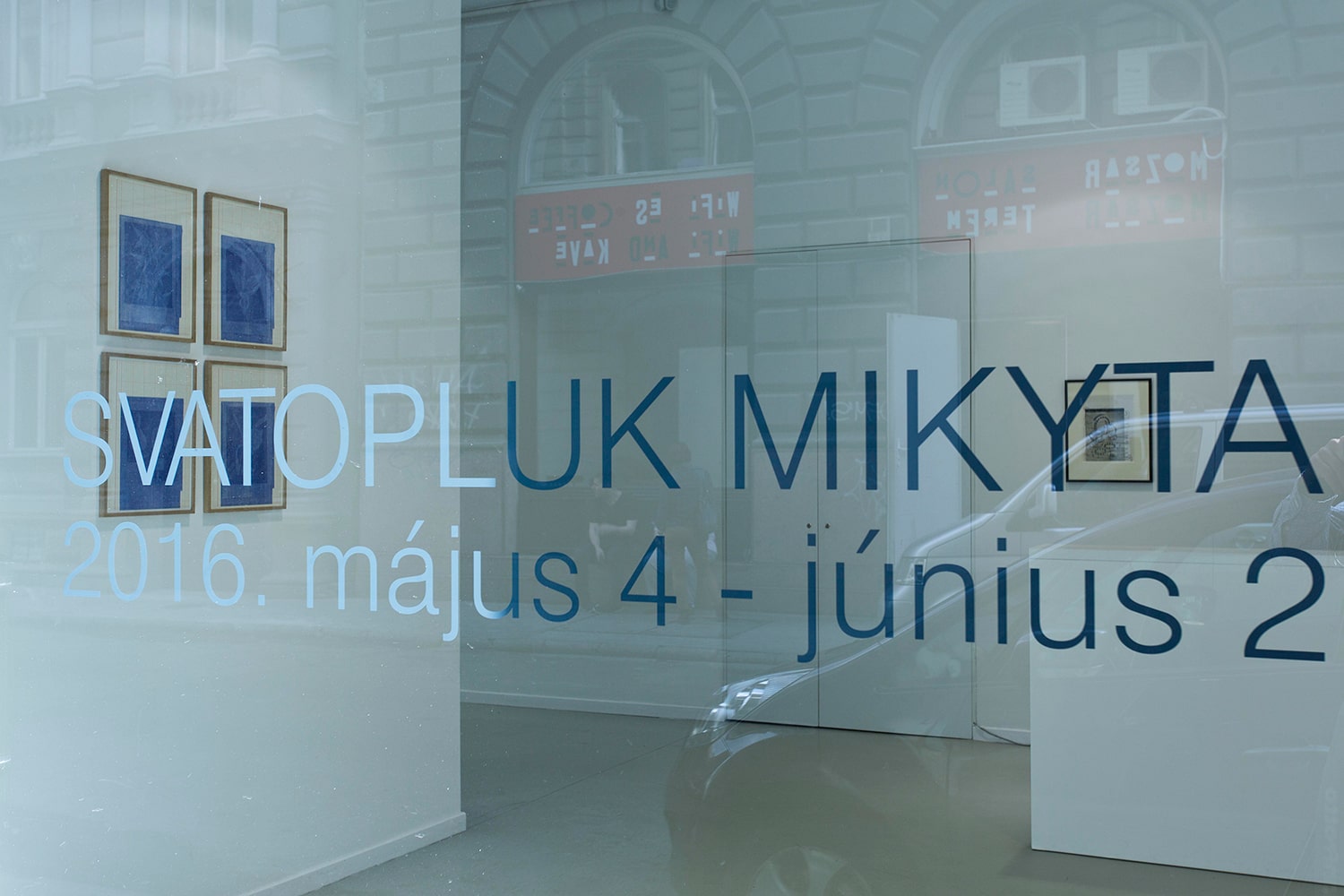
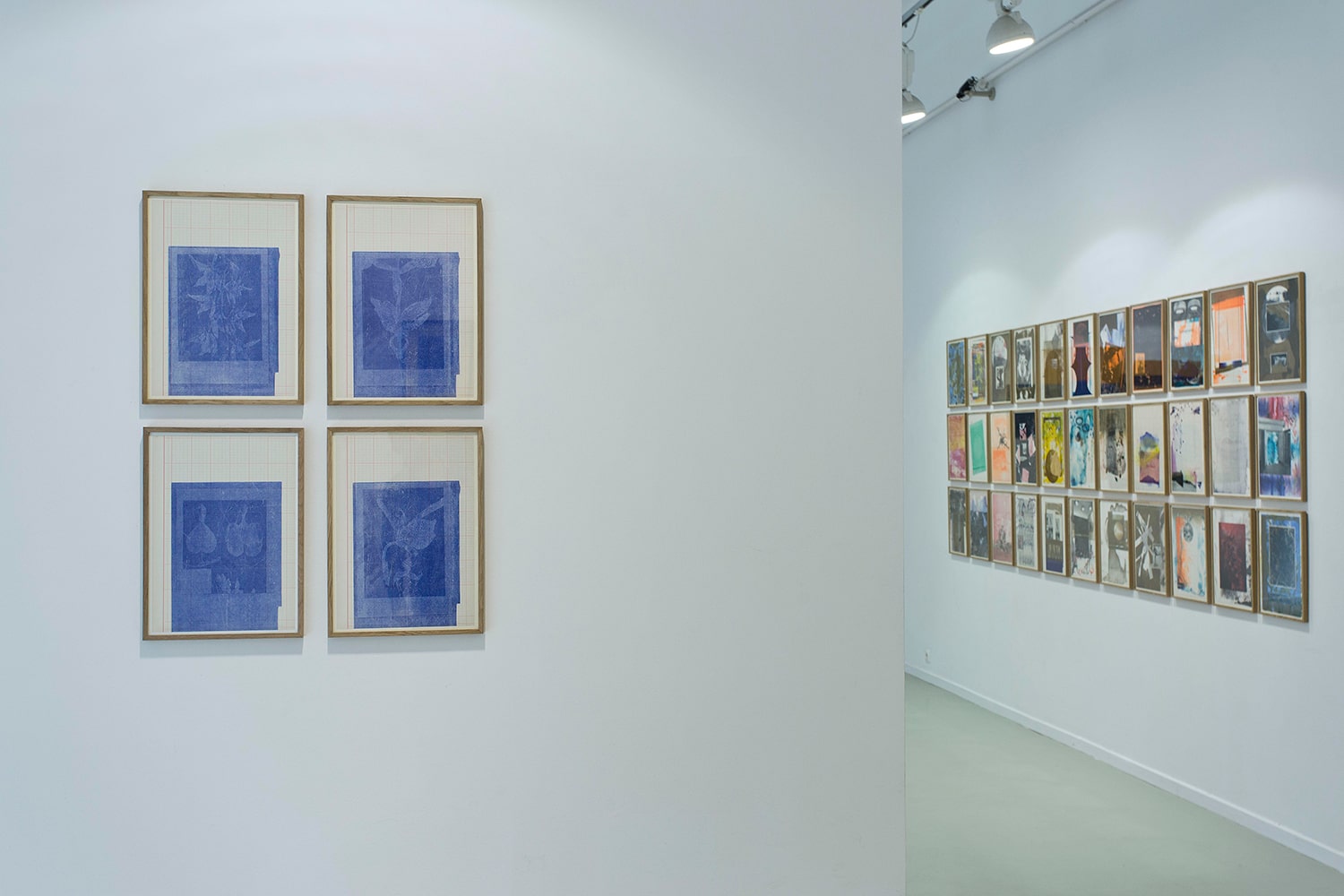
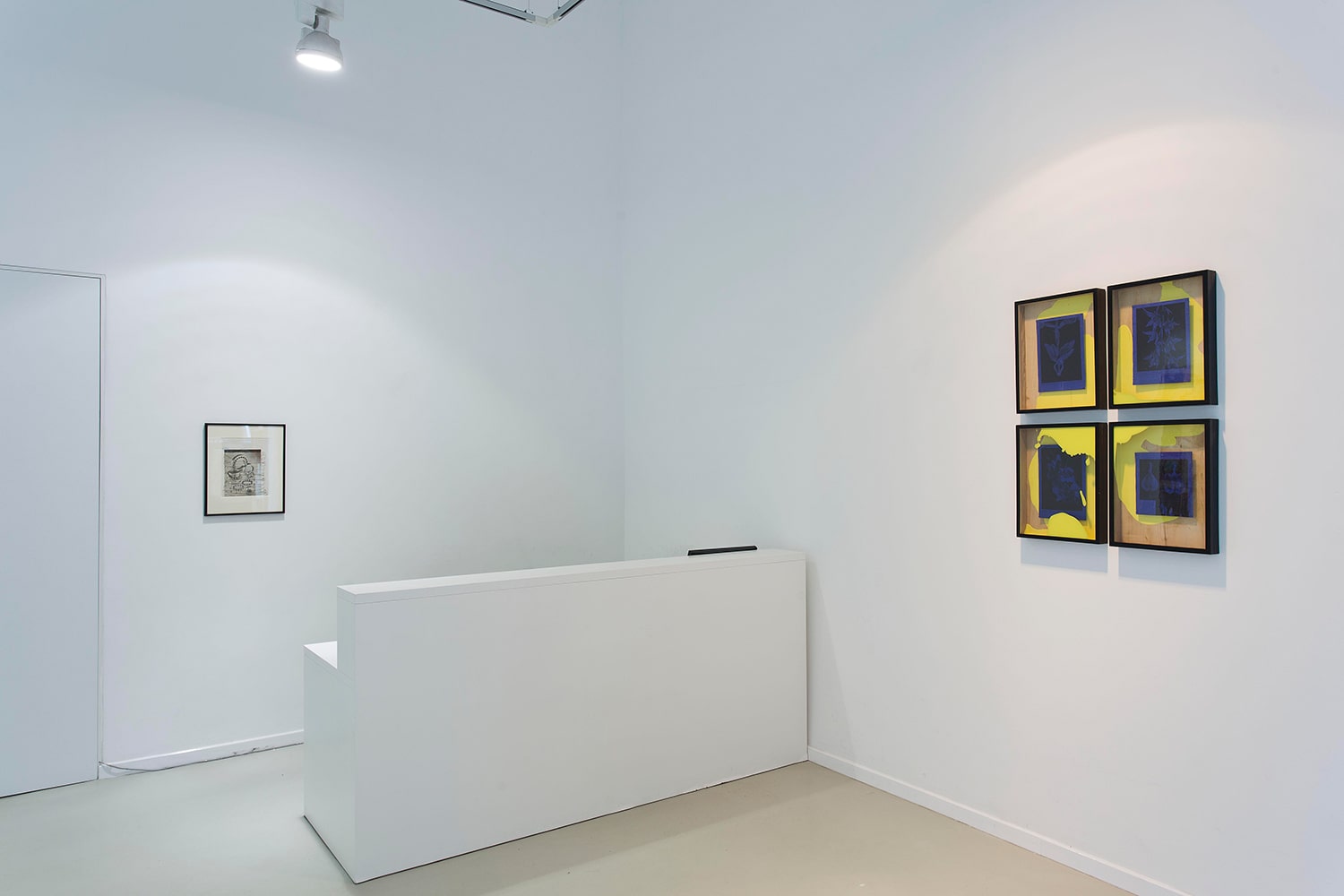
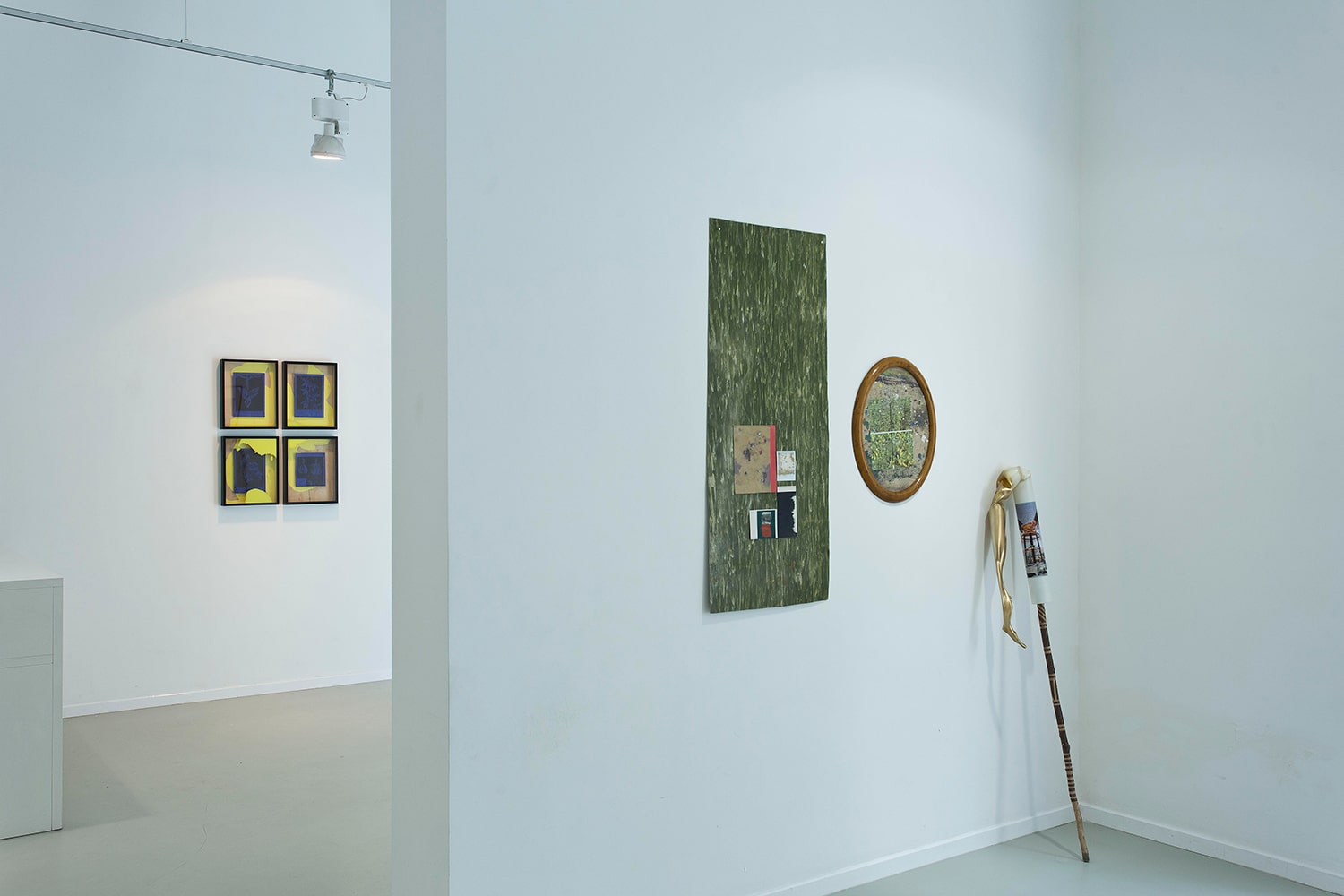
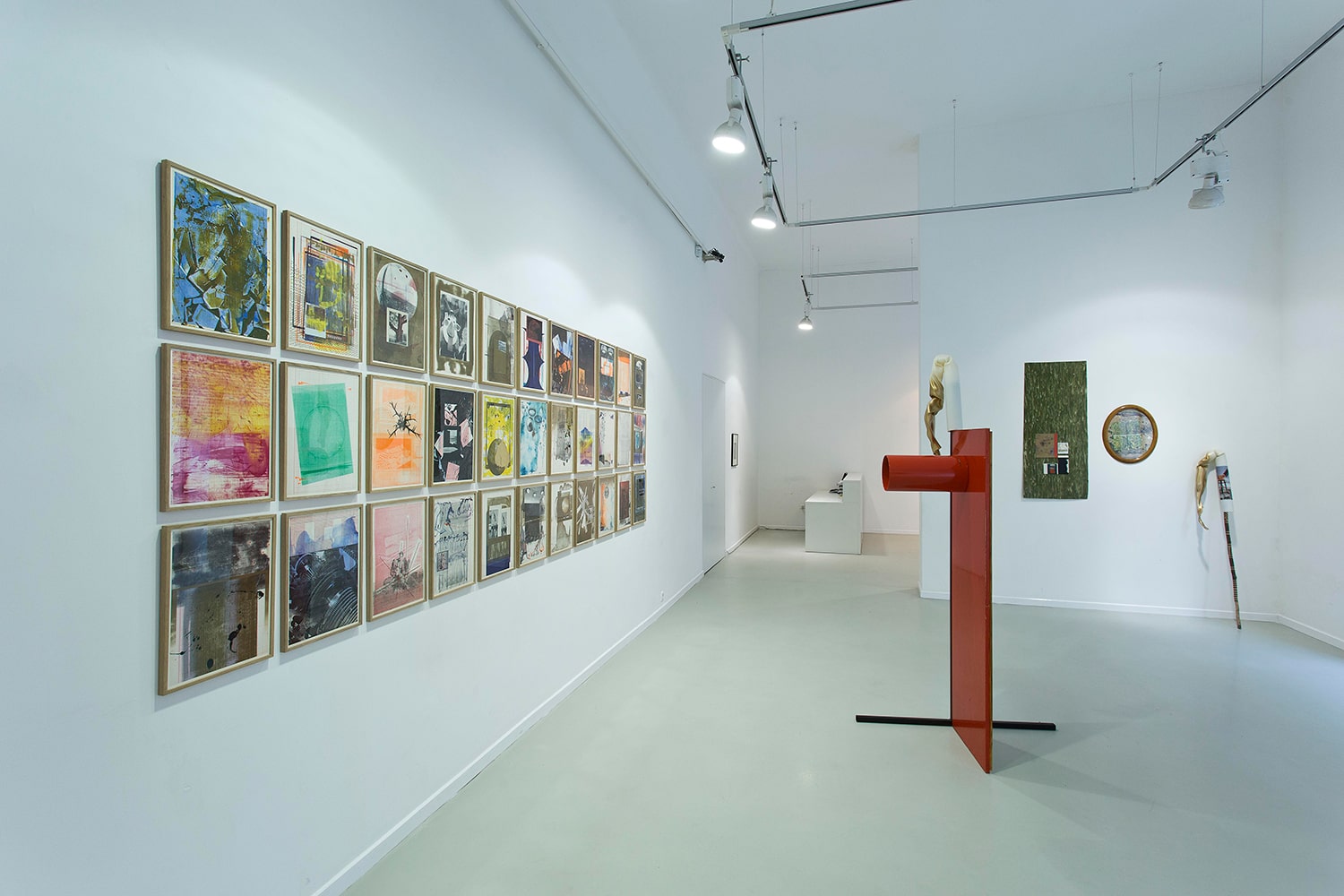
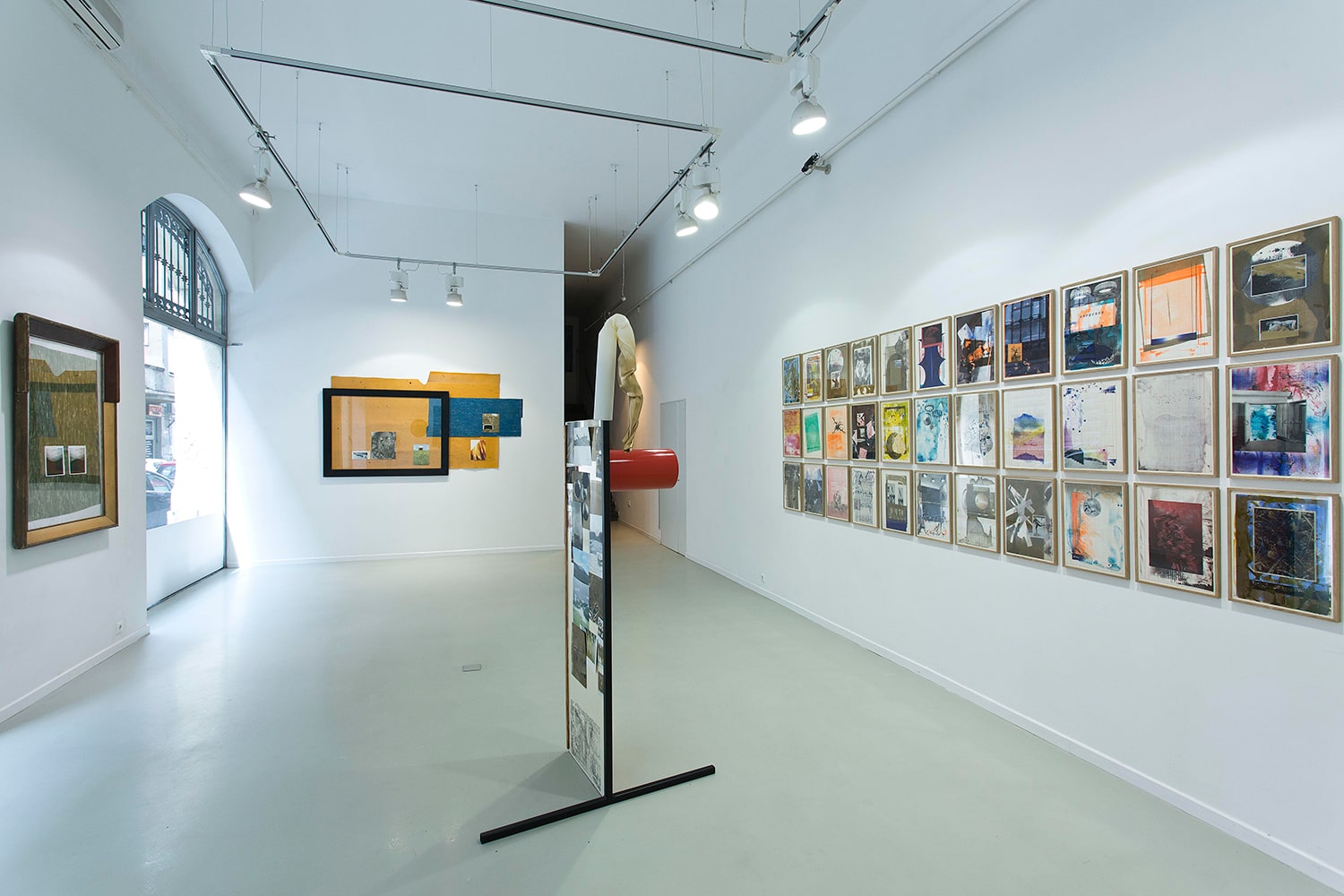
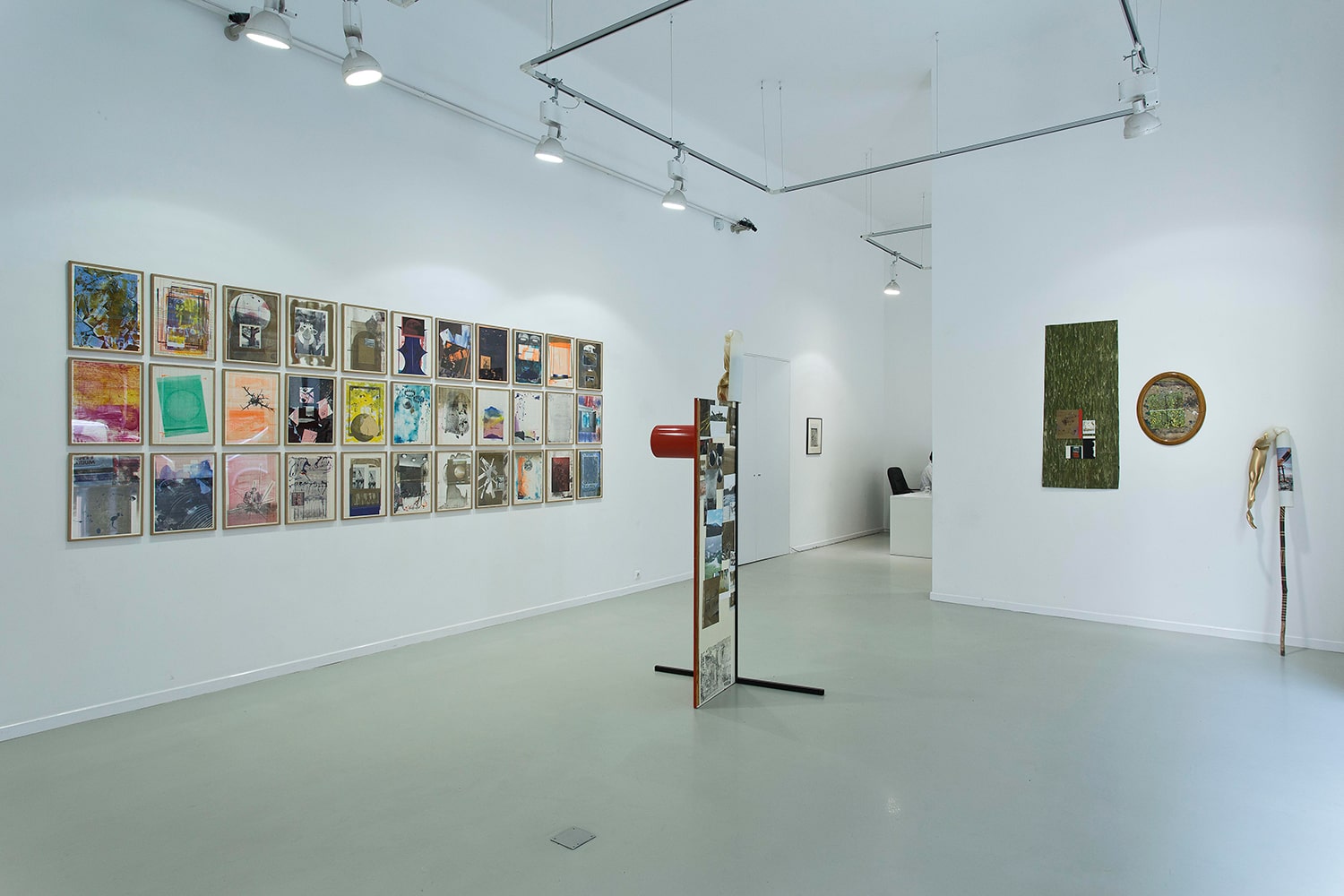

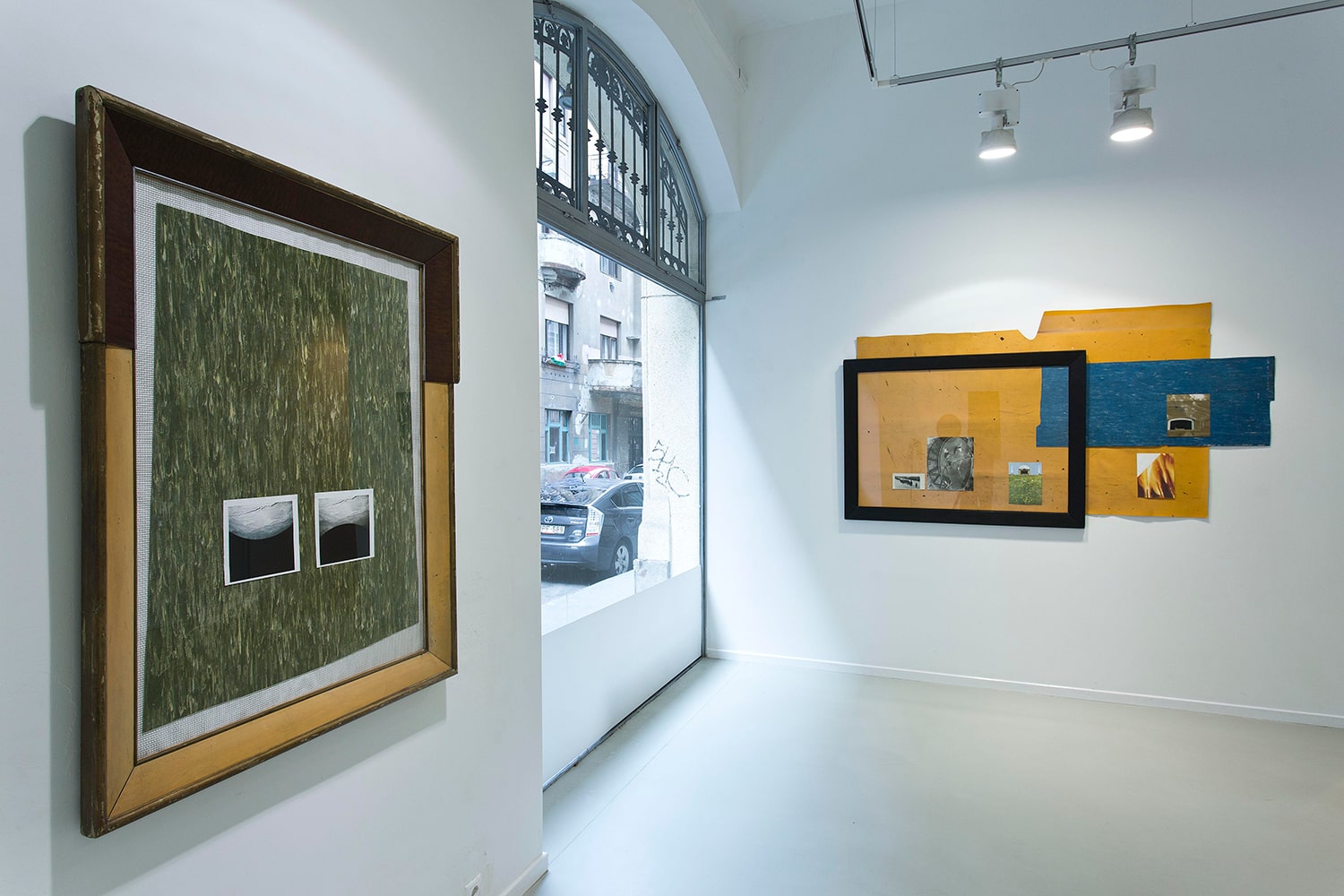
Svatopluk Mikyta
Ungold
Svätopluk Mikyta (1973) is showing his most recent works, a series of collages and monotypies at his second solo exhibition in the Erika Deák Gallery. Since his first exhibition in the gallery in 2013, which was entitled „Orange Humans”, Mikyta’s practice underwent a strong thematic and visual shift. Although his new works haven’t completely lost their political references, and the artist didn’t loose his interest in the graphic processing of found imagery, but countless new dominant elements surfaced in his oeuvre. These new works are rather universal and contain less local historical codes and references. The context and the interpretative dimension of the present exhibition is much more radically open, and also the avantgarde uniformism of his previoulsy used color spectrum, became noticably more expressive.
Svätopluk Mikyta’s recent exhibition, entitled Ungold, highlights a counter direction for the artist and his work, defining itself as an „anti-antique” tendency. Mikyta doesn’t want to create precious and old looking objects from new, cheap materials, with solely manipulating their surface. Mikyta doesn’t want to make contemporary objects looking antique either. He wants to make his collection of old images contemporary. This artistic intetion might seem to be paralell with the unreferentiality of our present digital visual culture, in which world Mikyta is very keen on staying inventively analogue. Due to the complexity and the unquestionable uniqueness of his works, they don’t only work in the theoretical context of industrially multipliable mass-produced images, but beyond that notion.
The most monumental element of this exhibition is a series of monotypies and collages made of 33 separate A3 sized pieces. This work could easily be interpreted as tapestry at first, but it’s not repetitive and it is highly dependant on individual and unreproducable forms. The works of the exhibition might be attributed as expressive, since Mikyta reserved a role for his personal gestures, and as well the unintentionality of the different use of technology. The artist uses gloden offset paint to paint over images, which are originated from black and white books. By doing that, the expressive qualities of the gold counterbalance the very hard-edge and exact character of the printed images. The artistic practice of Mikyta is very much based on the process in which he integrates his own and inimitable signature into and onto the reproductions of iconic images. This was the core of his previous „overdrawings” and „re-portaits” as well, but Mikyta radically expanded his pool of graphic and painterly tools now. The subjective iconography of Mikyta’s now range from botanical to typographical references, while it even spans through the objects of late-modern interior design.
Áron Fenyvesi
Svätopluk Mikyta is one of the most internationally visible Slovak artists, he is regulary participating in exhibitions in Hungary as well, beside Erika Deák Gallery, he exhibited in the Hungarian National Gallery, Trafó Gallery and in the Off Biennale. In 2008, he won the Oskar Čepan award for the best emerging Slovak artist, and in 2011 he also received the Strabag Art Award International. His works can be found in numerous collections, e.g. in MUDAM, Luxembourg. Svätopluk Mikyta is based in Banska Stiavnica and he is teaching at the Faculty of Arts of Masary University, Brno, while he exhibits extensively in Europe from Poland to England.
2016. május 4 - június 4.